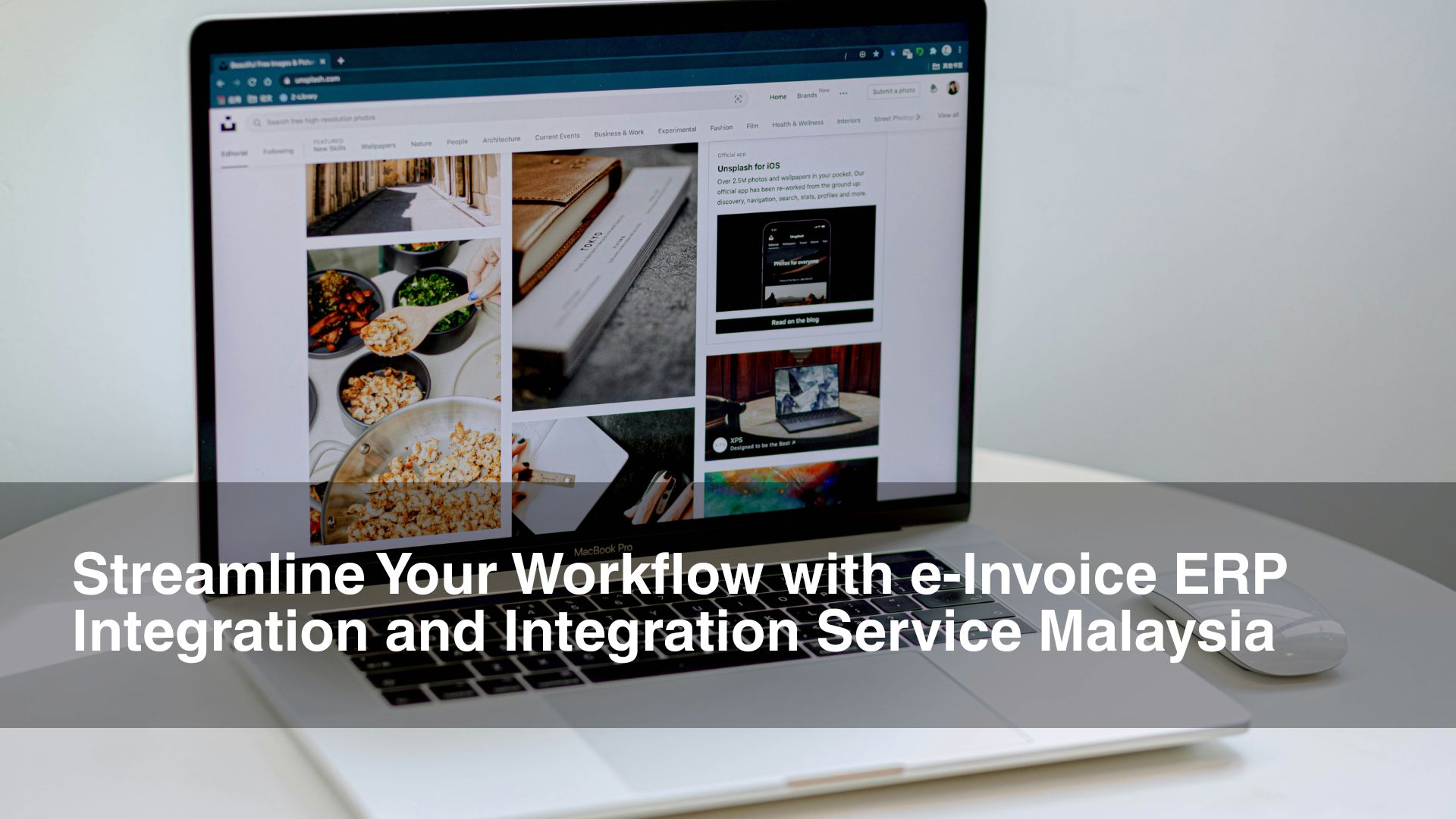As Malaysia continues to modernize its business and taxation infrastructure, e-invoicing is becoming not just a technological advantage but a regulatory requirement. For businesses seeking to comply with Malaysia’s LHDN e-invoicing mandates while improving operational efficiency, e-Invoice ERP Integration and Integration Service Malaysia offer the perfect solution.
This article explores how these tools can streamline your financial processes, automate compliance, and offer seamless ERP connectivity—particularly for SMEs, large enterprises, and businesses scaling rapidly in the digital economy.
1. Why e-Invoice ERP Integration and Integration Service Malaysia Matters
The implementation of e-invoicing across Malaysia is being gradually phased in, with mandates expected to affect all businesses by 2027. Compliance will require real-time reporting of invoices to LHDN (Lembaga Hasil Dalam Negeri), supported by systems that ensure data accuracy, traceability, and secure transmission.
e-Invoice ERP Integration and Integration Service Malaysia play a pivotal role in this transition. These services allow companies to connect their existing ERP (Enterprise Resource Planning) systems—such as SAP, Oracle, Microsoft Dynamics, or custom-built platforms—with e-invoice APIs regulated by Malaysia’s government. The result is automated data syncing between internal billing systems and the national tax platform.
Benefits of proper integration include:
Automatic generation and transmission of e-invoices
Elimination of manual data entry
Real-time validation and approval by LHDN
Streamlined recordkeeping and audit preparedness
Whether you’re in retail, logistics, manufacturing, or services, integration minimizes friction, boosts compliance, and reduces administrative burdens.
2. How e-Invoice ERP Integration and Integration Service Malaysia Work
At the heart of e-Invoice ERP Integration and Integration Service Malaysia is a secure bridge between your ERP system and Malaysia’s MyInvois Platform. These integrations typically involve:
Data Mapping: Aligning invoice data fields from your ERP system to match LHDN specifications.
Middleware/API Connector: A software layer that facilitates data transmission, validates documents, and ensures secure delivery.
Automation Engine: Triggers automatic submission of invoice data upon invoice generation or approval.
Monitoring Dashboard: Allows businesses to view status updates, error logs, and invoice confirmations.
A professional integration service provider will help you assess your current systems, identify gaps, and configure the integration for minimal disruption.
Some ERP platforms may already offer plug-and-play compatibility, but many Malaysian businesses run on customized ERP setups—making the e-Invoice Integration Service Malaysia essential for customized or complex deployments.
3. Key Features to Look for in e-Invoice ERP Integration and Integration Service Malaysia
Not all integrations are created equal. To ensure a robust and future-proof implementation, companies should evaluate solutions based on the following:
a. Compliance Readiness
Make sure the integration adheres to all LHDN e-Invoice regulations, including digital signature requirements, real-time validation, and audit trails.
b. Scalability
Your business may grow or change systems over time. A scalable integration ensures flexibility across multiple ERP versions or platforms.
c. Data Security
Choose services that encrypt data both in transit and at rest, with secure access controls and frequent backups.
d. Error Handling and Logging
Look for platforms that notify you in real time of any issues with invoices, and maintain detailed logs for compliance and troubleshooting.
e. Customization
Every business has unique workflows. A good e-Invoice Integration Service Malaysia provider will customize the integration to suit your specific billing structure, invoice templates, and business rules.
4. Choosing the Right Partner for e-Invoice ERP Integration and Integration Service Malaysia
The success of your digital invoicing transformation hinges on the right technology partner. Here are steps to guide your selection process:
a. Assess Experience and Certification
Choose a provider that is familiar with Malaysia’s LHDN e-invoicing framework and has proven experience with ERP integration projects across industries.
b. Support and Training
Implementation doesn’t end at go-live. Your provider should offer end-to-end support, including testing, troubleshooting, and training for your finance and IT teams.
c. Local and Global Compatibility
For businesses that operate regionally or globally, opt for a solution that supports multi-currency, multilingual invoicing and complies with both local and international tax requirements.
d. Cost-Effectiveness
Avoid overpaying for features you don’t need. Many e-Invoice ERP Integration and Integration Service Malaysia providers offer modular pricing based on business size and integration complexity.
By working with a reliable integration service partner, you’ll not only meet legal obligations but also position your business for long-term digital transformation.
Final Thoughts
Transitioning to e-invoicing may seem daunting at first, especially for businesses with complex ERP environments. However, with the right approach and a trusted provider of e-Invoice ERP Integration and Integration Service Malaysia, the shift becomes an opportunity to digitize, streamline, and enhance your financial operations.
Don’t wait until the last moment—begin planning your integration journey today to stay ahead of compliance requirements, reduce errors, and increase the agility of your finance operations.







